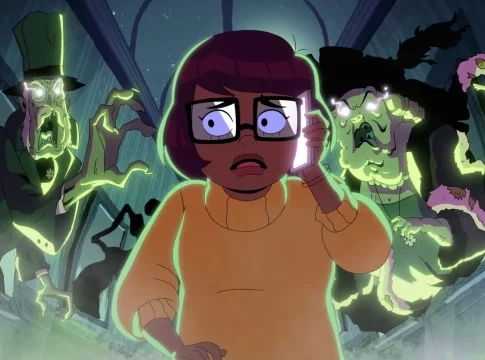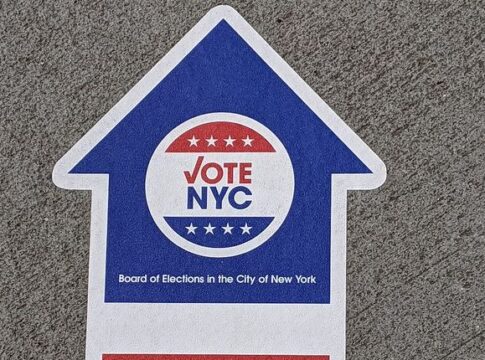By Jana Monji, AsAmNews Arts & Culture Reporter
Although there was celebration over the win by Naatu Naatu, there was almost instantly complaints on social media, some of which made no sense at all, including the one by April Reign, the person who started the #OscarsSoWhite activism. There were a lot of problems with that complaint in 2015 as there were in 2016, but in 2023, there were some cringy problems.
When the dance number for Naatu Naatu was performed, none of the dancers were of South Asian descent. Reign called this more #OscarsSoWhite, but it isn’t clear who the White people are. This might refer to choreographers Napoleon and Tabitha D’umo, but Napoleon is Filipino.
First, we must remember that the perception of the people in Asian countries about representation may differ from those persons who are products of immigration from those countries to the US. Issues of representation often differ. The film, RRR, evokes different things for different people. The New Yorker called the film a “political screed” but one must remember that in the US and the UK, a fictional figure like Gunga Din may also have different associations for people of Asian descent compared to Asian minorities in the US, UK or Canada.
RRR is an Indian production made for an Indian audience and more specifically, it is not Bollywood, but Tollywood. It’s focus audience is one that speaks Telugu. That makes RRR different from Whitewashed films like 2017 Paramount Pictures live-action production of Ghost in the Shell or the more recent Bullet Train.
LATEST STORIES
Secondly, I seriously doubt that even though people are using the term “South Asian” when asking for representation at the Oscars, that they really mean “South Asian.” South Asia includes India, Pakistan, Bangladesh, Nepal, Bhutan, Sri Lanka and the Maldives. I think people really mean Asian Indian dancers and if they want one to differentiate between Bollywood and Tollywood, then such critics would really mean Tegulu dancers.
Next, I have to ask what does representation mean? According to my research, there was a person of Asian Indian descent (born in India), who was working as a producer, Raj Kapoor. His account indicates that the production team in India was working with a production team in Los Angeles. The choreographer Prem Rakshith was working with the D’umos via Zoom. The original concept was to have the two stars, Ram Charan and N.T. Rama Rao Jr performing. That along with the two singers (Rahul Sipligunj and Kaala Bhairava) would have meant four people representing Tollywood and none of them would be dancers.
Another aspect is the timeline. The Oscar nominations were announced on January 24. According to Kapoor, Charan and Rao both withdrew from the performance in late February. Two dancers were cast based on their resemblance to Charan and Rao. In what seems to be a concession to #OscarsSoWhite activism, the casting of the other dancers veers away from the original casting in the film and is diverse enough to include Black dancers and a dancer of East Asian descent.
This specific scene is very different than the one represented by the song Jai Ho from Slumdog Millionaire. A few comments pointed out that 2009 Oscars performance for that song had much more South Asian representation. This is before the #OscarsSoWhite trended. Yet that film was not concerned with British Imperialism, but rather circumstances of poverty that kept two lovers apart within an Asian Indian cultural milieu.
The original intent of the Naatu Naatu Oscar performance seems to honor the original choreographer and choreography with the inclusion of the original singers and the original lead performers. A discussion about having a South Asian choreographer seems moot because the original choreography was adapted to the stage with the approval of the actual choreographer in the loop.
The choreographer Rakshith didn’t get his visa until March 9 b and he arrived just the day before according to one article. From the English-language articles I have read, I do not find that the complaints actually come from Rakshith. The question becomes: Are these complaints from South Asian Americans or more precisely, Asian Indian Americans, because the performance was in the US. If the original dancers had been able to perform, this would not have produced more representation for South Asian Americans or Asian Indian Americans. In the original dance sequence, besides Rao and Charan, the dancers for this scene are predominately White-passing and may be White. So if the original dancers had been able to circumvent the visa problem and had performed, this would not have visually resulted in more Asian Indian representation. And there would be no visual representation by Black dancers at all for this dance piece as there was at the Oscars.
But notice we have to be careful in how we use labels. When the choreographers are hiring dancers, I don’t believe they are checking ethnic backgrounds. I don’t know that dancers (and actors) want choreographers (or casting directors) in the US or Canada to be checking ethnic backgrounds. Some of the White-passing dancers in the film or on the Oscar stage may not be White as defined by the KKK or Hitler or the US Census Bureau. In choosing the two dancers (Billy Mustafa and Jason Glover) who resembled Rao and Charan, the Oscar teams brought a person of Lebanese descent (Mustafa) and a Californian with a Black father and a White mother (Glover) into the spotlight. Imagine how lucky they must have felt to be brought in with about two weeks to nail the choreography and to turn in a great performance. And to have the original choreographer happy with the results: “When I reached there on the 11th and saw the rehearsals, I was bowled over by their energy.” According to an article in the Film Compansion, Rakshith hoped that in the future choreographers would be recognized by the Academy.
If the original choreographer was not replaced, if the team in the US was consulting with the original choreographer and if the original choreographer is not complaining and if a person of Asian Indian descent was on the production team in the US, then is there really a problem of representation? Contrary to what Reign wrote, a South Asian choreographer was highlighted. The original intent was to have four people who were Asian Indian and from the original production on stage. In a one-off production with a short rehearsal time frame, sometimes intent is just as important as content. Moreover, the film is not a US production and does not represent US cultural erasure or an imperialistic view of India. But if one does have to cast by ethnicity, would any South Asian American dancer have been fine and how many would have been acceptable? Comparing the original scene with the dancers at the Oscars, there seems to have already been a concession made to weaken the original visual message. Is that the legacy of #OscarsSoWhite and is that a good thing? Because I think we need to consider: Would it be an act of American Imperialism if pressures from US-based groups, even if they are South Asian American, forces a change in the vision of a South Asian choreographer of a South Asian production that is not inherently racist toward the South Asian American group?
For more in depth discussion on the Oscar performance of Naatu Naatu or the film RRR visit my blog: Age of the Geek.
AsAmNews is published by the non-profit, Asian American Media Inc. Follow us on Facebook, X, Instagram, TikTok and YouTube. Please consider making a tax-deductible donation to support our efforts to produce diverse content about the AAPI communities. We are supported in part by funding provided by the State of California, administered by the California State Library in partnership with the California Department of Social Services and the California Commission on Asian and Pacific Islander American Affairs as part of the Stop the Hate program. To report a hate incident or hate crime and get support, go to CA vs Hate.









